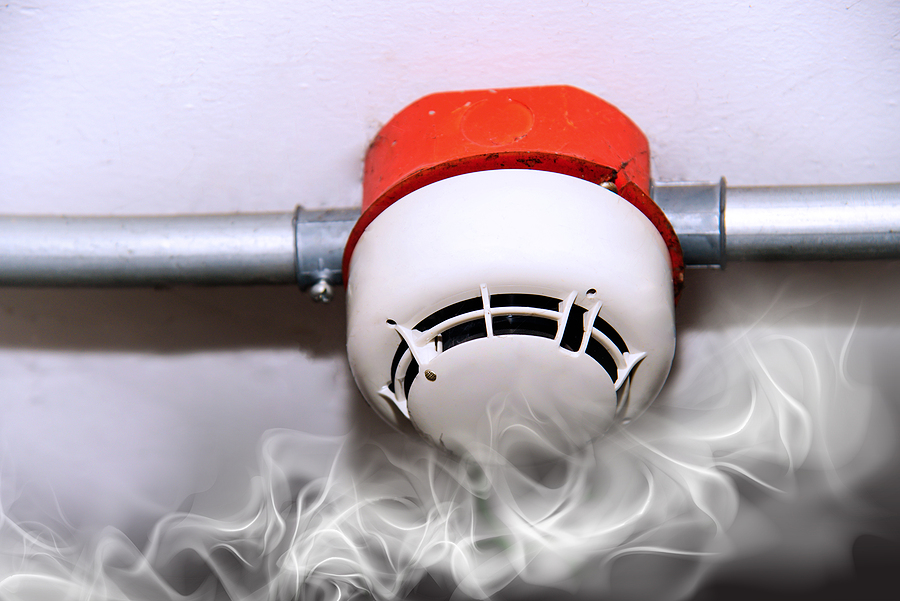To protect human life and properties from fire, an effective layered firewall system is very essential. Consistent professional inspections, appropriate maintenance, and public knowledge of fire safety equipment are the building blocks of a good fire protection plan.
This comprehensive article will delve into the main components of a fire safety system discussing why sustained inspections, servicing, and education are so important on all life-saving equipment.
Smoke Detectors – The First and Most Vital Line of Defense
Smoke detectors also known as smoke alarms provide the first indication that there is smoke or fire in any kind of structure or dwelling unit. These critical gadgets utilize either optical, ionization, or photoelectric sensors that continuously monitor air conditions by sensing small amounts of smoky particles.
According to numerous National Fire Protection Association (NFPA) recommendations, smoke detectors must be located within every bedroom, outside each sleeping area, as well as on each level of a home including basements and attics. In bigger homes or homes with multiple floors, additional smoke detectors may be required so that there is enough warning time for all occupants in all areas.
For them to effectively work when needed, smoke detectors must be routinely inspected at least once per month. The testing process involves pressing the test button on every unit to engage the alarm sounder to assess if it throws out adequate volume over the whole premises. Smoke detectors that have been connected to the electrical system also need to be verified by disabling the circuit breaker or supply point so as to prove battery backup engagement.
Fire Alarm Systems – Interconnected Notification for Large Buildings
While individual smoke detectors sufficiently cover single rooms or small homes, large commercial buildings and multi-family residential complexes absolutely require a fully integrated fire alarm system with extensive coverage to quickly detect emergencies and automatically notify all occupants throughout the entire building.
Fire alarm systems include an array of crucial components that all need to be inspected thoroughly:
- Manual pull stations are located near exits, giving occupants the ability to trigger the alarm if they detect smoke or fire. Pull stations should be clearly visible, accessible, and functional.
- Control panels, usually located in a protected utility room, which receive signals from detectors and trigger notification devices – panels must be wired correctly with tight, intact connections.
- Detection devices such as smoke detectors, heat detectors, and duct detectors are wired back to the main panel and will activate the alarm when dangerous conditions are sensed.
- Notification appliances include horns, sirens, speaker strobes, and warning lights that output audible, visual, and textual alarms in all occupied areas when the main panel is activated. Volume and visibility must be adequate.
Trained fire safety professionals must conduct weekly and monthly inspections and testing of fire alarm systems to verify proper operation. Testing tasks involve systematically checking that pull stations, detectors, and alarms activate appropriately and that audible notifications remain loud enough. Annual inspections also examine backup batteries, sensitivity levels of sensors, and integrity of system wiring and main panel connections.
Fire Extinguishers – First Line of Defense for Occupants
In the early stages of a fire, having accessible fire extinguishers on hand allows building occupants to attempt to suppress the flames before they grow into an unmanageable emergency. However, to prepare personnel to use extinguishers effectively during high-stress fire events, regular hands-on training is absolutely essential.
Fire safety professionals should provide annual live training on the proper PASS technique (Pull the safety pin, Aim the nozzle at the base of the fire, Squeeze the handle, and Sweep side to side). Trainees can practice deploying extinguishers at controlled practice fires to build experience.
Along with training, monthly inspections of extinguishers by qualified personnel are vital to ensure they function properly. Inspections involve visually checking for any damage or corrosion, verifying that tamper seals are intact, confirming pressure gauges show full charge, ensuring the locking pin is in place, and documenting the inspection with a tag.
Obstructed, damaged, or expired extinguishers must be immediately replaced. With ready access to fully charged, inspected extinguishers and realistic training on fire suppression techniques, occupants can take quick, effective action if small fires do ignite, preventing them from spreading into an uncontrolled emergency until firefighters arrive.
Automatic Sprinkler Systems – Reliable 24/7 Fire Suppression
The peak of fire protection for buildings and their occupants comes from automatic sprinkler systems. A network of piping, sprinkler heads, pumps, and water tanks can suppress fires immediately and automatically, preventing small fires from escalating into catastrophic events.
When heat from a fire is detected, a heat-sensitive glass bulb in the sprinkler head bursts, opening the water valve and spraying dozens of gallons per minute over the fire. This rapid response can extinguish flames and cool surrounding areas before structural damage and smoke spread through a building, providing precious time for evacuation.
To ensure flawless operation, all components of sprinkler systems require extensive recurring inspection, testing, and maintenance by experienced fire safety contractors. Pumps and water tanks must be checked regularly to verify adequate pressure and reserves. The piping network must be thoroughly examined for any leaks indicating corrosion and potential failure.
Conclusion
Regular and comprehensive professional inspections, diligent maintenance, and occupant education are extremely necessary to enhance the effectiveness of life-saving fire safety systems. The first alert is given by smoke detectors. All members within the building are alerted by interconnected fire alarms in case of an emergency. Occupants can put small fires out with easy-access extinguishers that have been well-maintained.
This prevents flames from becoming uncontrollable through the use of automatic sprinklers. To avoid loss of life or destruction of property that could be prevented in case of a fire tragedy, it is better to invest heavily in consistent equipment inspections, upkeep, and training on the proper use of fire safety apparatus. Risk reduction and minimization of damages caused by fires necessitate a multi-faceted strategy employing all parts involved in fire protection.
